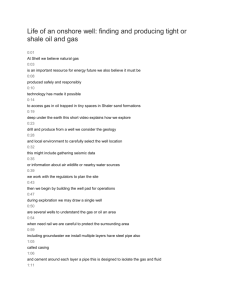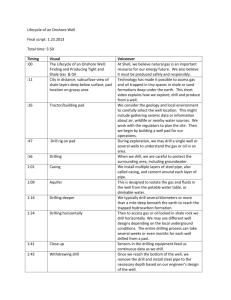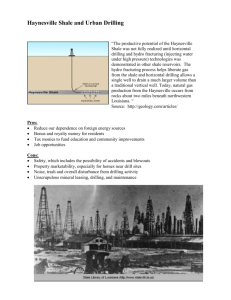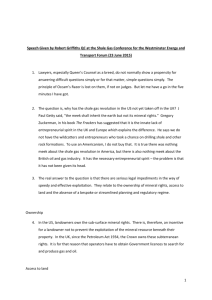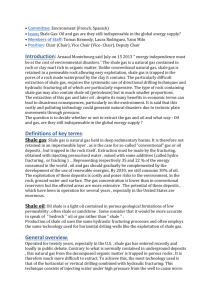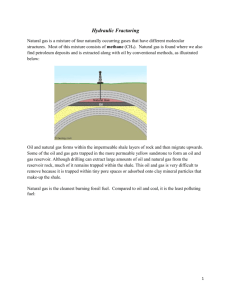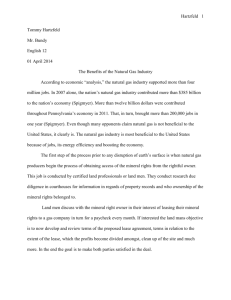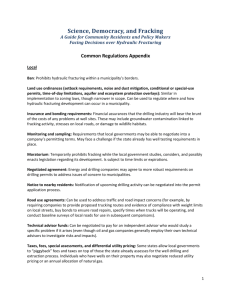Life of an onshore well
advertisement
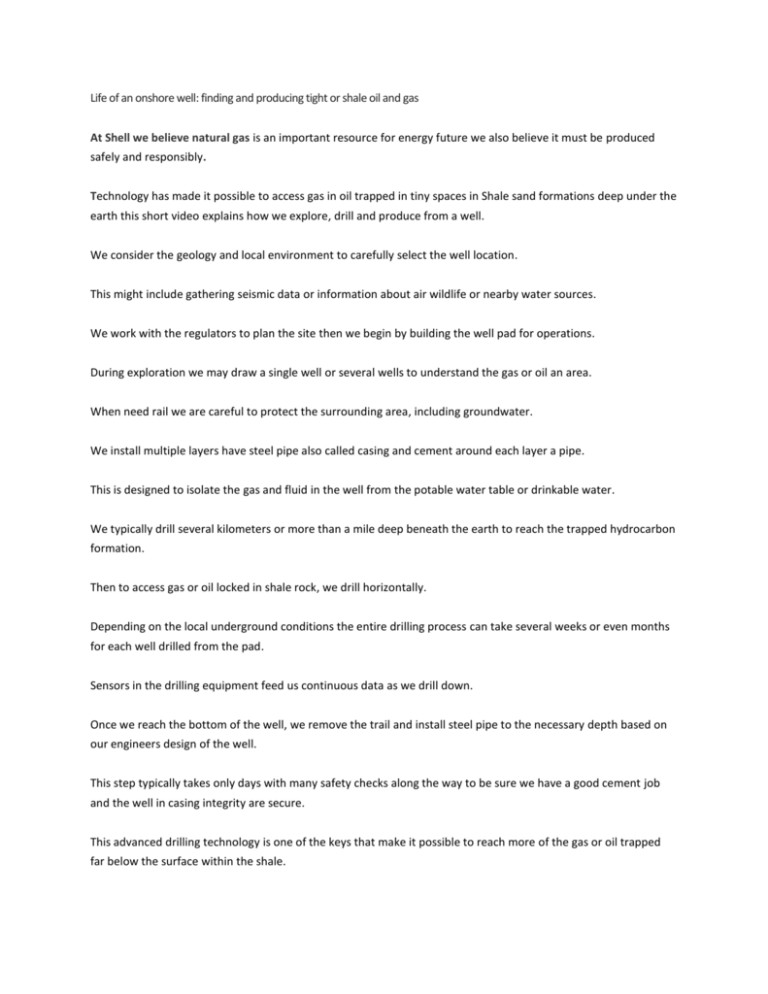
Life of an onshore well: finding and producing tight or shale oil and gas At Shell we believe natural gas is an important resource for energy future we also believe it must be produced safely and responsibly. Technology has made it possible to access gas in oil trapped in tiny spaces in Shale sand formations deep under the earth this short video explains how we explore, drill and produce from a well. We consider the geology and local environment to carefully select the well location. This might include gathering seismic data or information about air wildlife or nearby water sources. We work with the regulators to plan the site then we begin by building the well pad for operations. During exploration we may draw a single well or several wells to understand the gas or oil an area. When need rail we are careful to protect the surrounding area, including groundwater. We install multiple layers have steel pipe also called casing and cement around each layer a pipe. This is designed to isolate the gas and fluid in the well from the potable water table or drinkable water. We typically drill several kilometers or more than a mile deep beneath the earth to reach the trapped hydrocarbon formation. Then to access gas or oil locked in shale rock, we drill horizontally. Depending on the local underground conditions the entire drilling process can take several weeks or even months for each well drilled from the pad. Sensors in the drilling equipment feed us continuous data as we drill down. Once we reach the bottom of the well, we remove the trail and install steel pipe to the necessary depth based on our engineers design of the well. This step typically takes only days with many safety checks along the way to be sure we have a good cement job and the well in casing integrity are secure. This advanced drilling technology is one of the keys that make it possible to reach more of the gas or oil trapped far below the surface within the shale. After the well is drilled, we remove the red and prepare the well to begin the completions and hydraulic fracturing process. This is the second key to extracting gas or oil trapped in tight sand and shale rock. Hydraulic fracturing is a very carefully controlled process that releases the hydrocarbon from the tiny pockets in which it is trapped. We do not hydraulically fracture wells unless we have successfully pressure tested for wellbore integrity. We lower a tool called a perforating gun into the wellbore. We feed it down to the target location in the well, where a well log gives a statement about the well helps us know just where to position the tool. Once the perforating tool is in position, they fire carefully calibrated charges to perforate the well casing. After we reach the tight sand or shale rock layer, we inject a mix of fluids under pressure, mostly water with sand and chemicals to create fractures in the surrounding shale rock. The Sand pops open the cracks and allows the gas to flow better into the well. When possible we treat and reuse the fluid recovered during fracturing to minimize the amount of water reuse. We support the release of information about chemicals use in fracturing fluids. We fracture the well in four stages. After each stage, we put in a temporary plug to separate the fracture stages and prevent gas or oil from flowing too soon. The number of stages will depend on the local geology. We repeat this process until we have finished fracturing the line to the target area. Hydraulic fracturing and completing the well typically lasts only a few days for each well. When we are ready, we drill out the plugs. This allows the gas or oil to flow into the well. At the well pad, the flow is separated into gas and liquids Liquids might include oil or water that was also locked in the rock deep below ground. We collect the water to be reused, reinjected or disposed of according to local regulations. The gas or oil continues to a pipeline to provide energy during exploration. If no pipeline is nearby we may need to temporarily flair or capture the gas in short term facilities or store the oil in short term tanks on the location. If we decide to develop the area we typically put multiple wells on a single pad reaching in different directions deep underground to minimize disturbance to the surface. All our wells in tight sand operations meet government rules and our own rigorous standards for safety and protecting the environment. Once drilling and completions are done, we remove most of our equipment and reduce the size of the well pad A well typically can produce needed energy for decades. We inspect and maintain well sites regularly during their productive life. When the well is no longer producing, we comply with regulations to cement it closed, test that it is sealed, remove all equipment and structures and reclaim the site to blend back into its surroundings. A permanent marker is installed to mark the well location.
